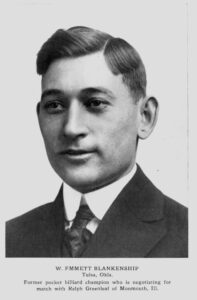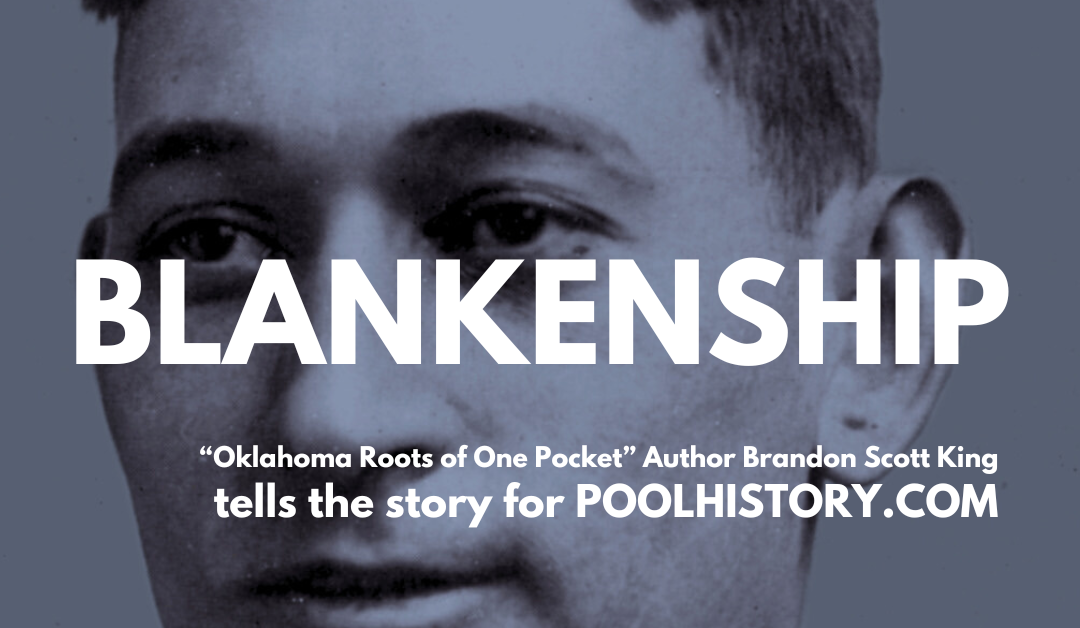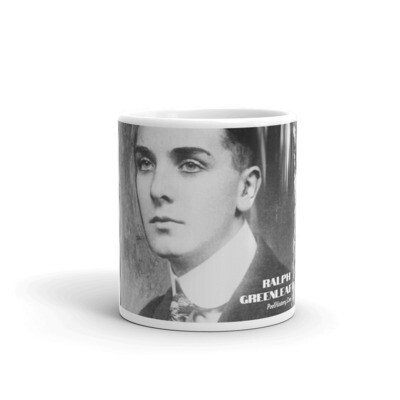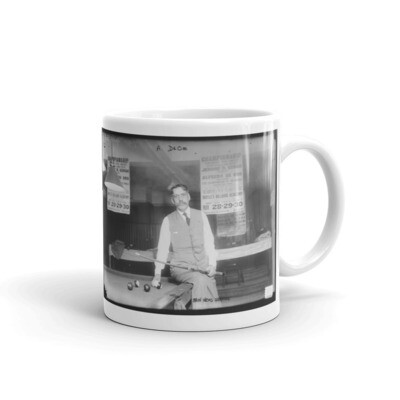Emmett Blankenship won the World Title on his first attempt in 1916.
________________________________________________
EDITOR’S NOTE: In this article, adapted from content from an upcoming book, guest contributor Brandon Scott King (also known as Rabbi Hippie) writes about early pool legend Emmett Blankenship and his 1916 world title run. The content for this article is drawn from Mr. King’s upcoming book on the origins of one-pocket.
By Brandon Scott King

Emmett Blankenship, from a 1917 edition of Billiards Magazine, and courtesy of Mike Shamos’s Billiard Archive site.
In 1916, Emmett Blankenship won the world straight pool title on his first try, surviving a marathon round-robin format that started in February and lasted until the end of March. He finished the tournament with a 10-2 record, one game ahead of runner-up Johnny Layton. His sole defeats came at the hands of Layton and James Maturo, who had been the runner-up from the previous world championship. A 16-year old Ralph Greenleaf finished fifth.
He took the title in convincing fashion, averaging 4.719 balls per inning — nearly double the numbers put up by the rest of the field. This feat is even more impressive considering that the tournament was played on 5′ x 10′ tables with 4 ½” corner pockets and 4 ¾” side pockets. Ivory balls measuring 2 5/16″ in diameter were used — that is, slightly larger ones than the 2 ¼” balls used today — and so the table conditions were tougher than those found in any current pool game outside Chinese 8-Ball or Russian Pyramid.
Blankenship had the best game in the tournament with his opening match against Joseph Concannon, whom he defeated 100-55 in eight innings. He also beat Ralph Greenleaf 100-72 in the final game of the round robin. One could plausibly explain that outcome to youthful inexperience on Greenleaf’s part since he was only sixteen at the time. However, at 24, Blankenship was not much older and both players were making their first world championship appearances.
How good was Blankenship? Those who saw him play often mentioned his name in comparison with Greenleaf, and some said he was even better. Among the pro players qualified to judge, African-American legends James Evans and George “Rotation Slim” Hairston (no strangers themselves to exclusion) both ranked Blankenship over Greenleaf. Charles “Cowboy” Weston, the 1902 runner-up in the world championships, included Blankenship in his personal list of the top ten players in history.
Blankenship also was the first person to run over a hundred balls at Straight Pool and had a personal best high run of 287 balls during an exhibition in Jackson, Michigan, in 1915. In fact, Blankenship’s high run exceeded Greenleaf’s 271 and Erwin Rudolph’s 277 and stood as the high-water mark until Irving Crane surpassed it with a run of 309 balls on a 5′ x 10′ table in 1939, a feat later duplicated by Willie Mosconi in 1946. Little attention has been given to the fact that it took twenty-five years for the rest of pooldom to catch-up with Blankenship.
In tournament literature, Blankenship’s hometown typically was listed as Detroit. In actuality, however, he was born in Olden, Missouri, an unincorporated area north of West Plains, and grew up in both Tulsa and the community of Purcell, which was just outside Oklahoma City. He was born on April 6th, 1892.
And while he is thought of now as one of the sport’s early greats, his career actually was quite short-lived. Blackenship’s first appearance in that 1916 world title event would be his last, and by the 1920s he had largely left the public eye.
________________________________________________
This article is adapted from the book The Oklahoma Roots of One Pocket. If you’re interested in buying the book, please send an email to books@rabbihippie.com.

Pool History Merch
Help preserve pool history by purchasing a coffee mug, t-shirt or other merch. That's because we re-invest 100 percent of net sales proceeds to pay guest writers and artists. Have an article to pitch? Go to the Guidelines for Guest Writers tab for more info.











Commenter on AZBilliards spotted a typo in the header where Blankenship’s name is misspelled.
Thanks — good catch. We have it fixed…